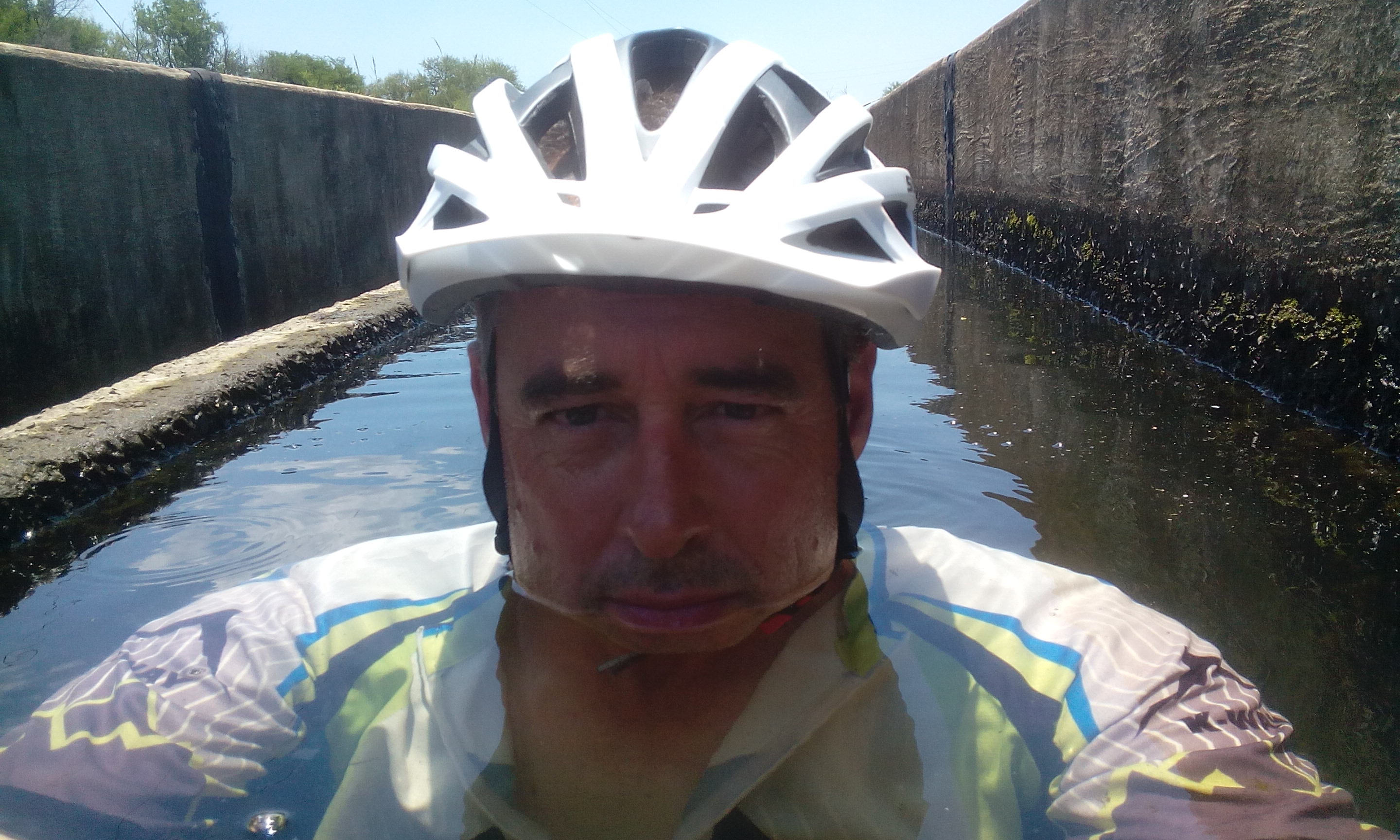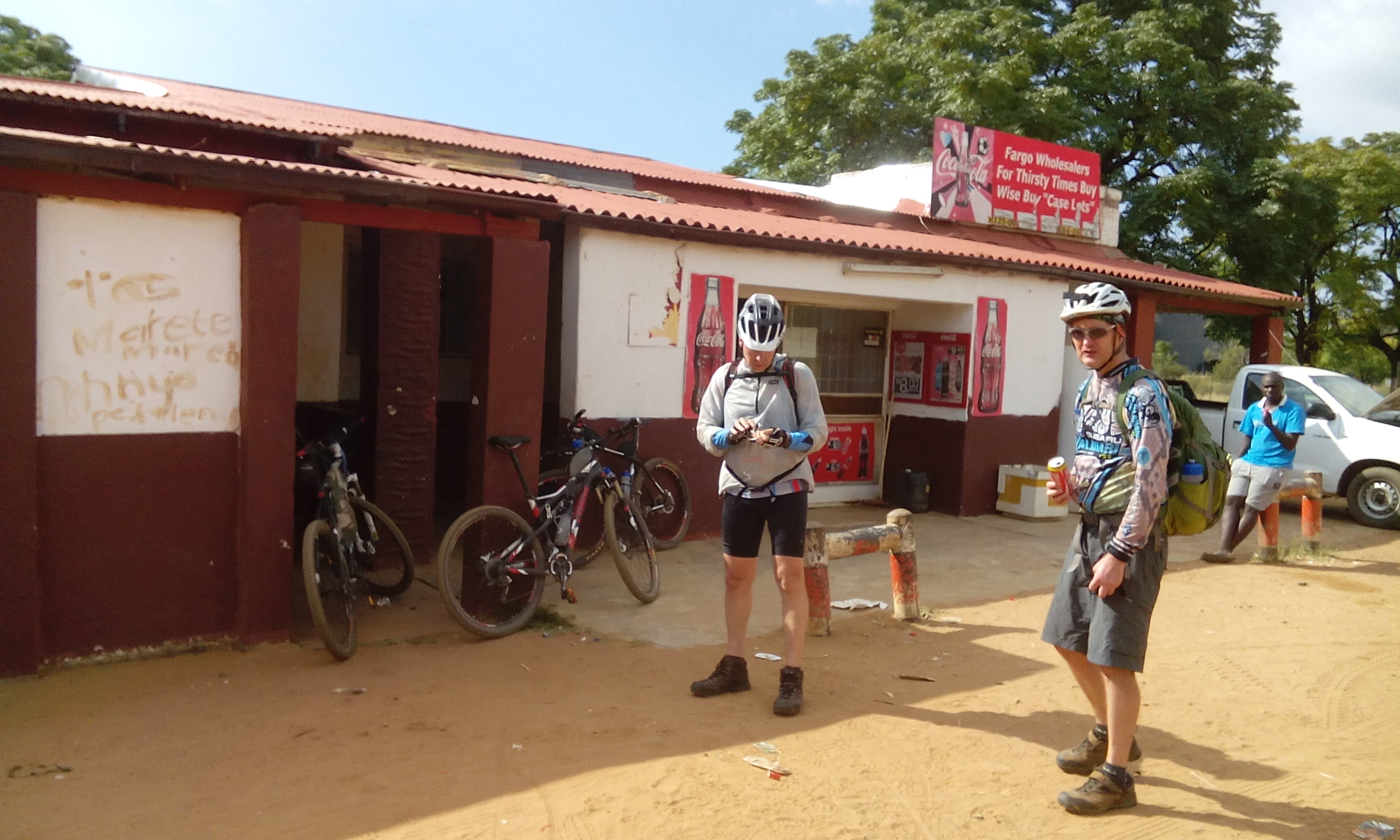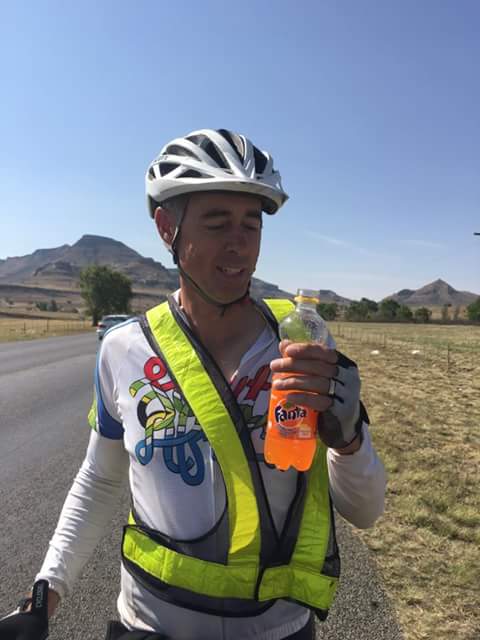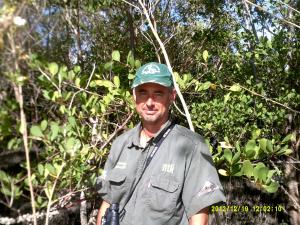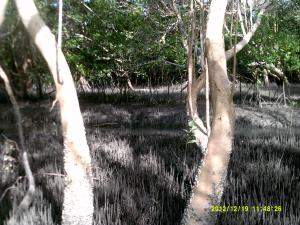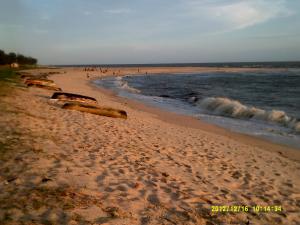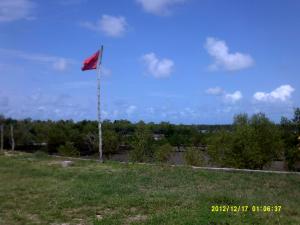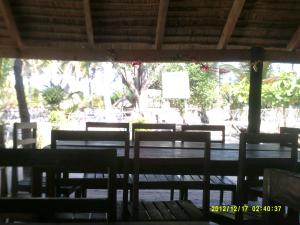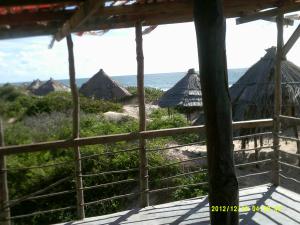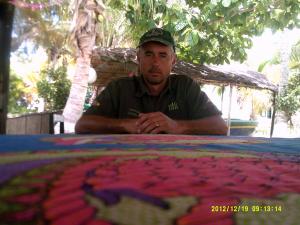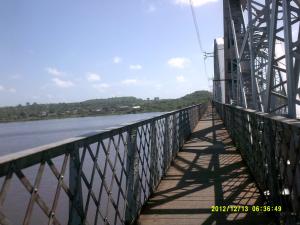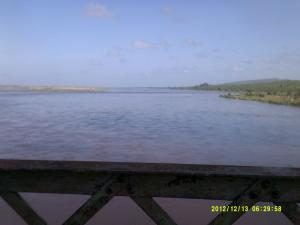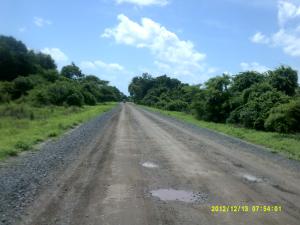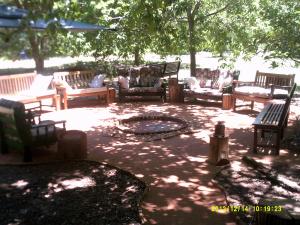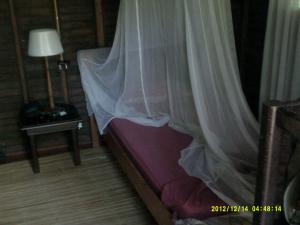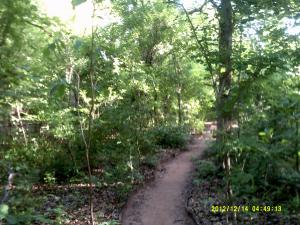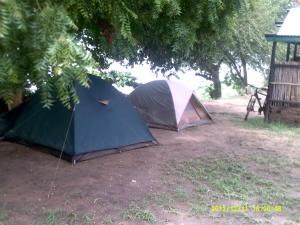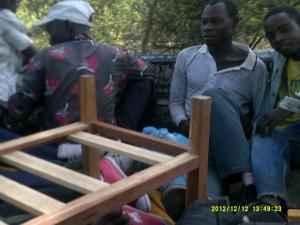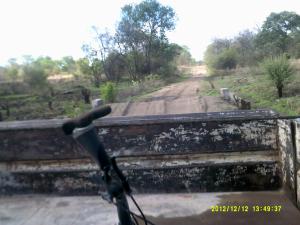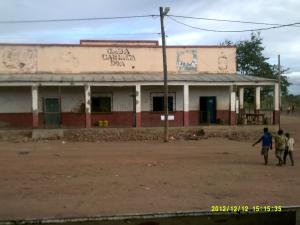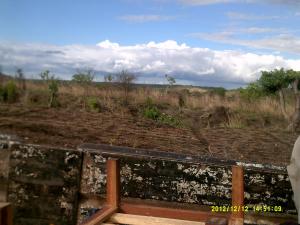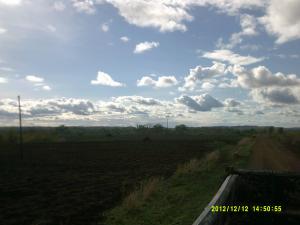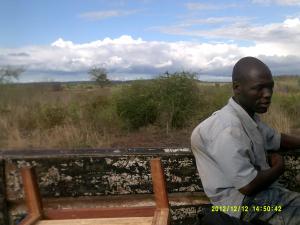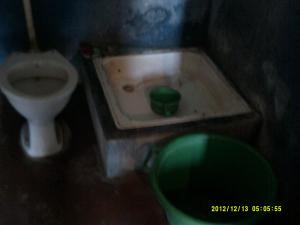After having an early English breakfast and settling my bill I struck out on a risky adventure. I took the 4X4 road on the east of Gongorosa National park. Where one person said there might be a lodge to sleep at. Another website on my cell said there was a place to stay. To start the road was not bad but had sandy middle man. When a car came I had to pull off and stop.

Digital Camera

Digital Camera

Digital Camera

Digital Camera
Only saw my first vehicle after 40km of sand. Passed Inhamitanga did not see any lodge. Passed Inaminga saw a sign for a safari company but seemed to point at some huts. This used to be the main railway sidings for the Sugar cane plantations when the Portuguese were here. Station and some buildings are just a shot down ruin. Apparently there was one of the big battles that took place here as it was a strategic place in the civil war. There is a town laid out with nice wide streets and run down houses. Some been used and others ruins. There were some government buildings.

Digital Camera
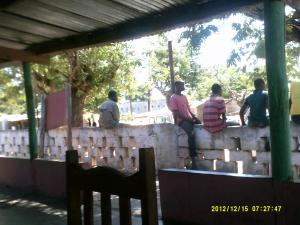
Digital Camera
It was a Sunday morning when I passed through here. Town was like a big street gathering. People sitting on the walls in front of shops talking and shouting comments at people. Stopped at a tavern to see if they had cold water. Some chap took a chance with the communication problems and made sure he had a Coca Cola on my account. Water was low and it was very hot. So bought a Coca Cola and sat on the veranda and watched the antics people were getting up to. After finishing my drink I rode down the street looking in shops to see if I could get a good meal as it was about 10:30 am and knew there were no big towns for a long way. On the edge of town I found a nice take away/ sit down eating place. Ordered a half chicken and chips. Here met a trader that could speak English. We had a long chat about Mozambique and business and the road ahead. He offered me a lift. He was first going to have to do business in town and would leave much later. I said that I will start down the road and if he finds me on the road I would like to accept the offer. However I must have travelled much faster than him so did not see him again.

Digital Camera

Digital Camera

Digital Camera

Digital Camera

Digital Camera

Digital Camera
Temperature rose to the hottest day for the trip. It went to 45 degrees Celsius on my cycle computer. The water in my bottle was as hot as tea. Had to stop under trees every few kilometres to cool down, as I could feel heat exertion setting in. The road was also very badly corrugated. Every now and again I would find bolts and washers that had been shaken loose off of vehicles. Do not know what was worse the corrugation or the deep sand that I was doing earlier. Earlier in day the sand was so bad that I had to push my bicycle.
At about four in the afternoon I arrived at Maunza. This was a small town and knowing there was not towns for a long way I started to look for sleeping accommodation at the first place I came to. It happened to be an overnight place. Very new with tiled floors and beds without mosquito nets over the bed.

Digital Camera
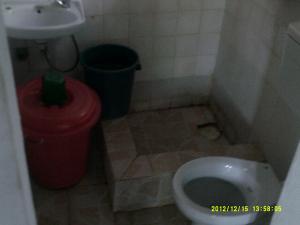
Digital Camera
The person that tiled had not had proper training as you could see how things do not line up right. Well at least it looked clean. I was the only person in that wing of rooms. On another wing there were men that worked for the railway company. It seemed to be a school. The host must have been a teacher. He could only speak Portuguese.
I placed an order for supper but could not understand what was on the verbal menu. So said Sadsa and half chicken. He said no chicken. Then he changed his mind and said ok. Later I worked out why.
The host then invited me over to sit under a tree in front of the school to talk with the men. However they could not understand too much, just Harare and bicycle. Then there was the echo of Harare going down the streets. Little later there came a Zimbabwean that spoke English. He then told my story to a few people sitting near. It turns out he works for a white Zimbabwean farmer that got kicked off his farm. So he employs people like him and sends them away to get training in conservation agriculture. Then he places them in small villages all the way from Kenya to Mozambique to train the locals. He then supplies seed and purchases the harvest back from them. The people he employs advise the rural farmers. I am sure they do not know the true value of their harvest, as they do not have market information out in this remote area. It is also difficult to transport produce out to cities. Cost of transport also prohibits marketing in the cities. I then told him how we farm at home. Even had a few pictures and videos of no till planters, sprayers and harvesters on my cell phone. He wished he could come and get some experience with this large scale farming.
I asked him how do these people make a living in the area. He said the men refuse to work. They have lots of wives and children. Then the women toil on the fields to feed the family. He says a thirty five year old man like him would normally have about five wives and twenty children. This way he does not have to do anything and when he gets old his children will have to look after him.
While sitting under this tree with the men. A woman came down the road with a child. She was disciplining the child which was crying. It struck me as I was sitting under this tree that it was a safe area. I realized then that the family structures were in place. She was teaching what is right and wrong. That is why I felt safe here. Where as in South Africa the family structure was damaged and the migrant labour had caused broken families, resulting in gangsters and criminal activity. We do not always realize the value of family structure to maintain a safe happy community.
For protein there are a few men that drive trucks to Cohora Basa and purchase fish and bring them back to sell in the village. The other trade is poaching in Gongorosa nature reserve. When I was sitting there he pointed out a Toyota land cruiser pick up. He said these were game guards from the nature reserve that are involved in anti-poaching. However some of them are involved in the poaching to, if I understand correctly. There are no cattle in this village as the insects kill them off.
It took until eight thirty at night to prepare supper for me. I can only think why it took so long. I think they had to barter for the only chicken running around town, then catch it, kill it and then cook it. By the time I got the chicken it had a lovely taste and was in a stainless steel oven tray with a little sauce. However I had to put my foot on it to hold it down when trying to rip a piece of flesh off. Not that there was much flesh on those bones. Must repeat again it was tasty. All the while the host sat across the table from me and watched me eat. When I was finished he signalled to the cook to bring him his food. He had the other half of the chicken. He seemed to enjoy it. Did not look half as tough as when I was trying to eat. I had to stay to see if he managed to rip the flesh off those bones.
It was a hot steamy night with very little air movement. Did not sleep to well as I could hear the mosquitoes flying around. All I could think of was getting malaria. The host had armed me with a tin of doom (insect killer). Had to give a spray every now and again when I heard the mosquito air force was getting heavy.
Crossing town at sunrise I saw there was a lot of government buildings as this was the provincial capital. There were also lots of old ruins from the Portuguese time and the war.
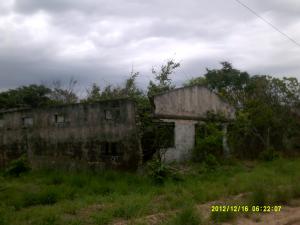
Digital Camera
I also gave that Indian a message that I would be passing Dondo just after lunch. He wrote back that the colleague of his had died and was busy with arraigning to send his body back to India. In his words “he was no more’’. So he would not be able to see me. First five or so kilometre was hard sand and made good time. Then stopped for muesli cereal along the road at about eight in the morning. Did this to try to cover as much distance before the heat of the day. This section of the road was through a bit of a tropical jungle.
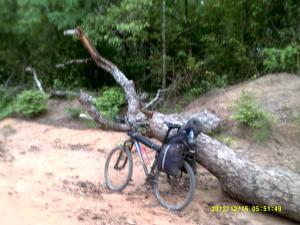
Digital Camera
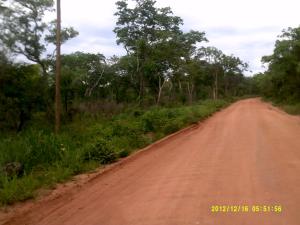
Digital Camera
There were quite a few logging trucks on this road. There was also a truck hauling cotton out driven by Chines men. The road became deep sand and made for some hard ridding.

Digital Camera

Digital Camera
Before midday the rain came in made the sand a little harder. The rain cooled things off nice and gave me an extra boost. This was 36 km from the tar at Dondo. The rain got heavier and heavier. Then passed a village where I could see a vehicle coming from the back. It took some kilometres to get to me. When it over took me it was a pick up full of people on the back. They all laughed at me. Not far down the road I over took it, then there was some comments. Few kilometres down the road it over took again, this time they shouted what sounded like motivation. All the time the rain was coming down and rivers of water were coming down the road. I rode in the shallow rivers so as to get the compacted sand under my wheels. Not far down the road I overtook them again this time they were calling me a machine. Then they over took me again where on they passed comments of respect. All of this racing I was doing with the pickup was to help me to keep up a good pace. Otherwise the rain and road conditions would have started to wear me down. Finally after about ten kilometre of this I could not ride anymore as the wheels were sinking into the mud deeper than the rims on the wheels. The road had become a river bed. My bicycle chain had so much mud on it, you could just feel it grinding. At this point I was twelve kilometre from the tar at Dondo.

Digital Camera
I had to get off and push through the deep waters and bad mud patches. The rain had stopped leaving me with a real mushy road. I could tell it was getting less rural by the amount of vehicles starting to move up and down the road. I was getting closer to the tar at Dondo.
At the T junction at the tar road there is a taxi rank with a small market. There were a few eating places. I picked a place where two people were sitting eating. I just pointed and said want that. They were eating Sadsa and fish. It was about two in the afternoon and the hard work of the day and the wet rain had made me very hungry. It was so nice to get some warm food down in the stomach. The two men invited me to join them. They could speak a little English. We had a good chat and they bought some water for me.
Before leaving the taxi rank I tried to wipe off the mud from the chain and put some lube on. Chain and bottom bracket were making funny noises from the rain and mud. Now it was tar road down to Beira. In some places there was a wide shoulder on the road and riding went fast. This was so easy compared to what I was ridding before Dondo. However there was some sand tipper trucks that did not give way for me and I had to jump off the edge of road whenever they came past.
Hotel in Beira was a welcome relief to take a shower. Tried to take a photo to show how I was mud from top to bottom. However you would have to zoom in but the camera does not have enough pixels.

Digital Camera








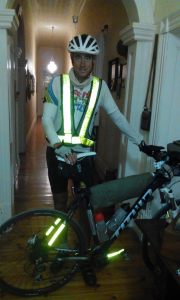
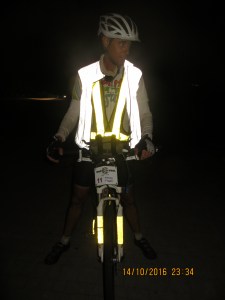 Far to many cyclist where black. Yes, most bibs come in black. However a high visibility shirt or jacket in a colour like yellow and green or even white can make you more visible in the day.
Far to many cyclist where black. Yes, most bibs come in black. However a high visibility shirt or jacket in a colour like yellow and green or even white can make you more visible in the day.






